[ad_1]
Dwarf angels are some of the most sought-after saltwater fish for reef aquariums, but are they reef-safe, can you mix them, and what size tank do they need? Here we answer all your most frequently asked questions via our email.
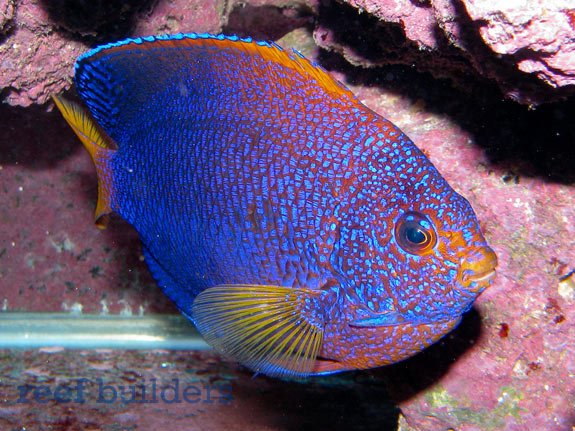
What is a Dwarf Angelfish?
Generally, they are members of the Pomacanthidae family which top out at about 6” when fully grown. This includes all of the Centropyge genus, with Centropyge interrupta being the largest, but also Paracentropyge species like Multibar angels, P.multifasciata. Dwarf angels make popular reef tank subjects because of their bright colors, small size, and not-too-aggressive nature.
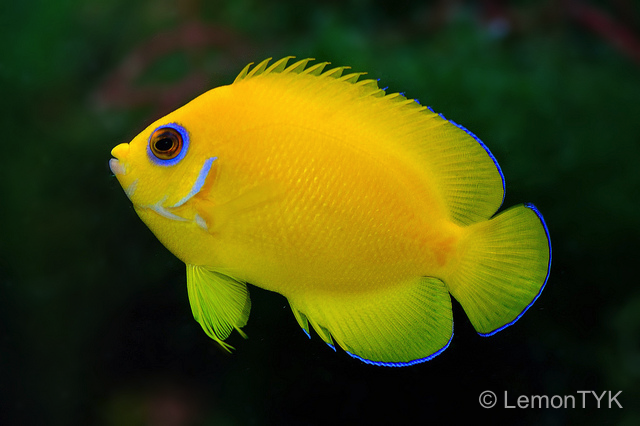
Are Dwarf Angels reef safe?
Most dwarf angels should be added with caution to mixed reefs. They all have the ability to nip corals occasionally and if an LPS coral isn’t opening and everything else is testing fine, if you have a dwarf angel in the tank, it could be the cause, by nipping at it. Bicolor (C.bicolor,) and Lemonpeel angels, C.flavissima are probably the worst although we’ve seen Cherub (C.argi) and Potter’s angels (C.potteri) wipe out zoa colonies. Red Stripe (C.eibli) and Golden angels (C.aurantia) can be bad too. Some may even nip at SPS and soft corals and you just never know until you try as there will always be individual exceptions to the rule. Most of the people who put corals first and foremost leave dwarf angels out of their reef tanks. It’s not worth the risk.
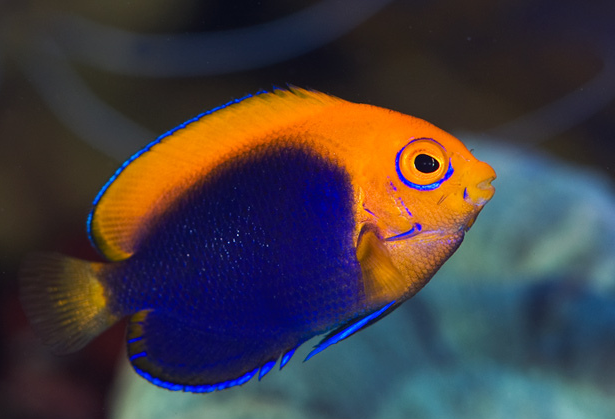
Which are the best Dwarf Angels for beginners?
The Coral Beauty (C.bispinosa) is a good choice for beginners, as are Flame angels (C.loricula) and African Flameback angels, Centropyge acanthops. All dwarf angels should be treated for Flukes before being added to a reef tank, however, and all need mature tanks with plenty of rockwork to forage and swim through.
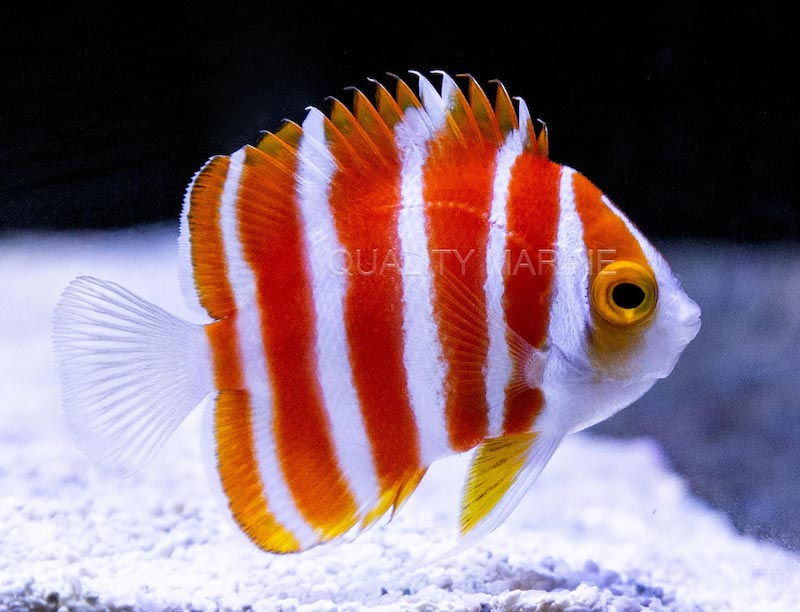
Which are the rarest Dwarf Angels?
The list is long, but probably the rarest dwarf angel, still, is the Peppermint angel, Centropyge boylei. Then there is Centropyge resplendens, debelius, joculator, nahachyi, interrupta, abei, narcosis and colini. Masked angels, Genicanthus personatus, are highly prized and very expensive, but being a Genicanthus their maximum adult size of 8” precludes them from the dwarf angel moniker. Even Potter’s angels, C.potteri, are rare right now because their fishing is prohibited in the State of Hawaii. Then there are hybrids and aberrations of many species.
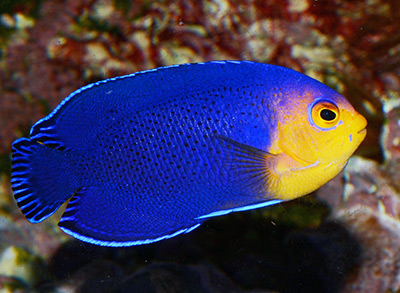
What size tank does a Dwarf Angel need?
Although some are kept in nano tanks and small cubes, even Pygmy angels really need a rock-filled, 250 liter/66 gallon, three-foot tank if they are to thrive, and all species will thank you if placed into mature, 500 litre/132 gallon, five-foot reef tanks and larger. These intelligent fish like to search every part of the rockwork for grazing opportunities as well as to hide away from time to time. They aren’t like Clownfish which are happy staying in one place.
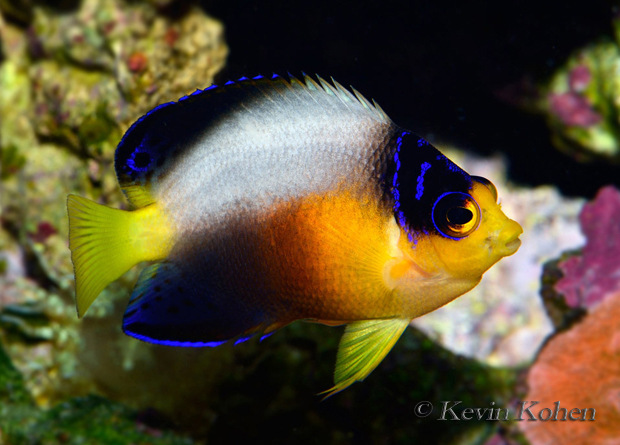
What do dwarf angelfish eat?
Dwarf angels are omnivores that will graze algae from rocks as well as frozen artemia, mysis, flake, pellets, and sheets of nori. Vary their diet for optimum health and make sure they have something to pick at for most of the day. Deepwater dwarf angelfish don’t have algae to graze in nature so are probably dining on a multitude of polyps, sponges, and microfauna.
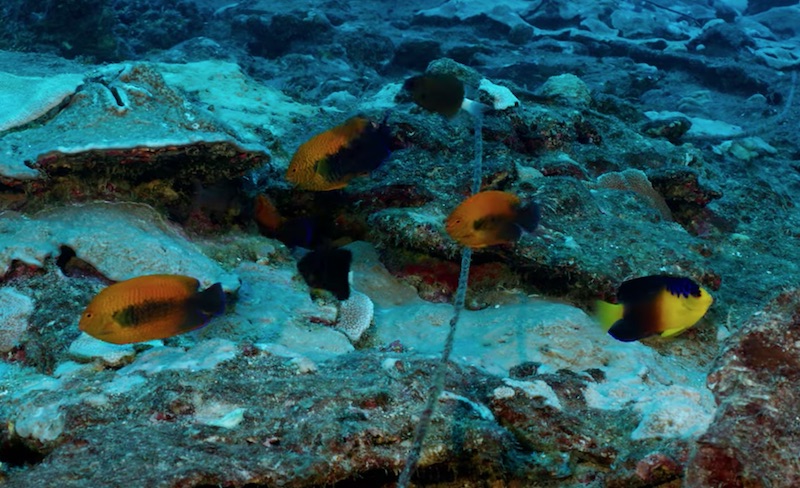
Can you mix Dwarf Angelfish?
We wouldn’t mix two dwarf angelfish together in anything smaller than a five-foot tank and even then we would choose species with very different colors and patterns. Like with larger Angelfish, they can be mixed in higher numbers and kept like cichlids in fish-only saltwater aquariums, where aggression is divided up throughout the number of fish and no single fish dominates, but it can be stressful for them too. Dwarf angelfish can change sex from female to male, and pairs can occasionally be purchased. We have even seen harems of some species in tanks, but a single specimen is best in all but the largest aquaria.
If you want to mix your dwarf angelfish with other territorial grazers like surgeonfish, again choose contrasting colors and patterns, so mix a flame angel with a yellow tang (not a bright yellow Lemonpeel,) for example.
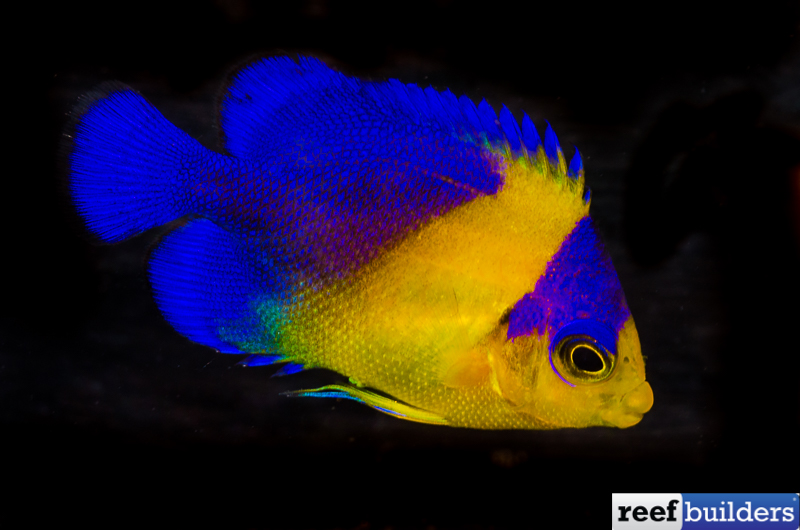
Can you buy tank-bred Dwarf Angels?
Yes, quite a few species have been bred in captivity including Fishers (C.fisheri) Lemonpeel (C.flavissimus,) Flame (C.loricula) Multicolor (C.multicolor), and Centropyge interrupta. Captive-bred Multibar (P.multifasciata) and Venusta (P.venusta) angels are available now, are much easier to keep than wild-caught, and are super cute as juveniles.
[ad_2]



